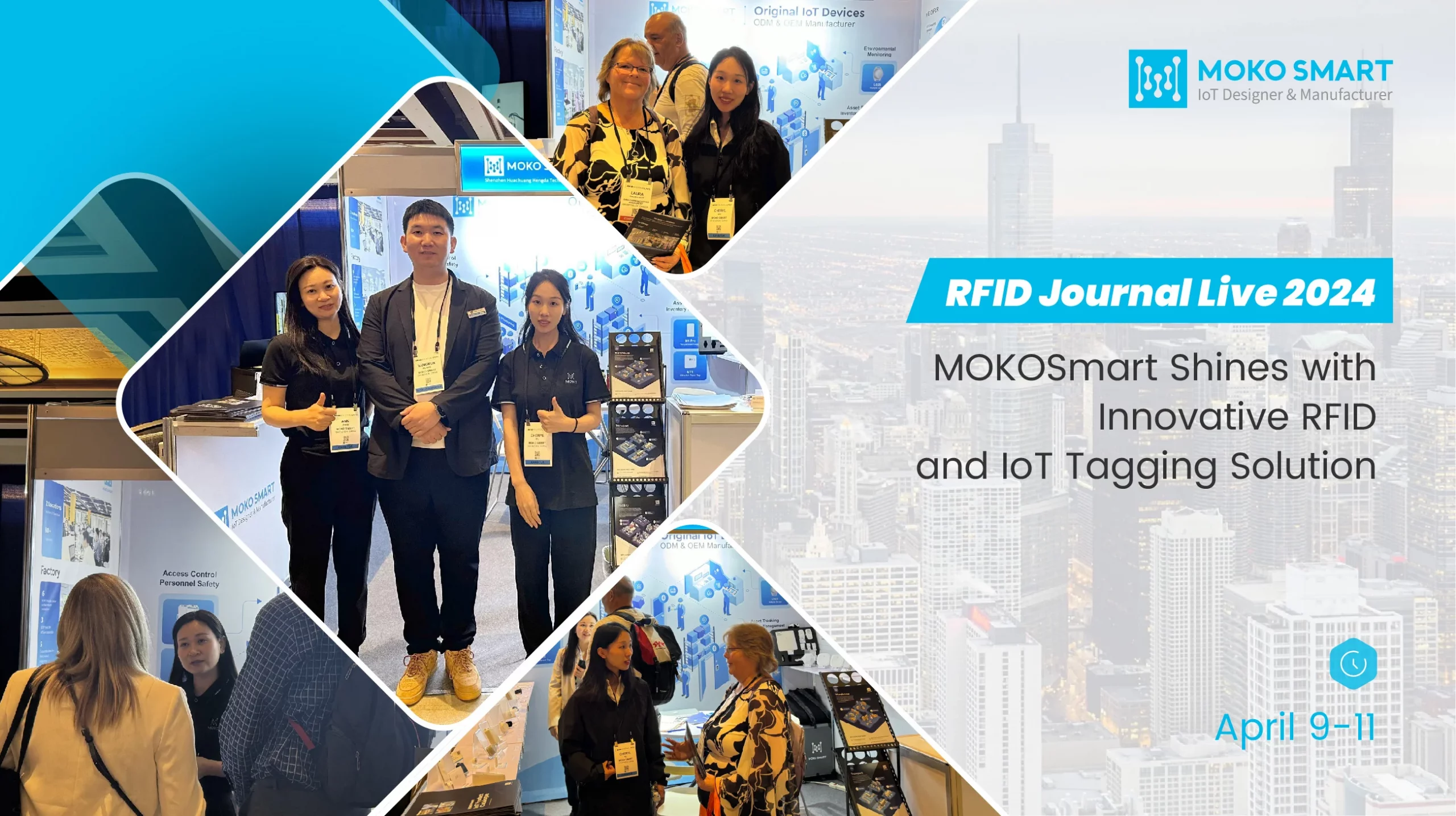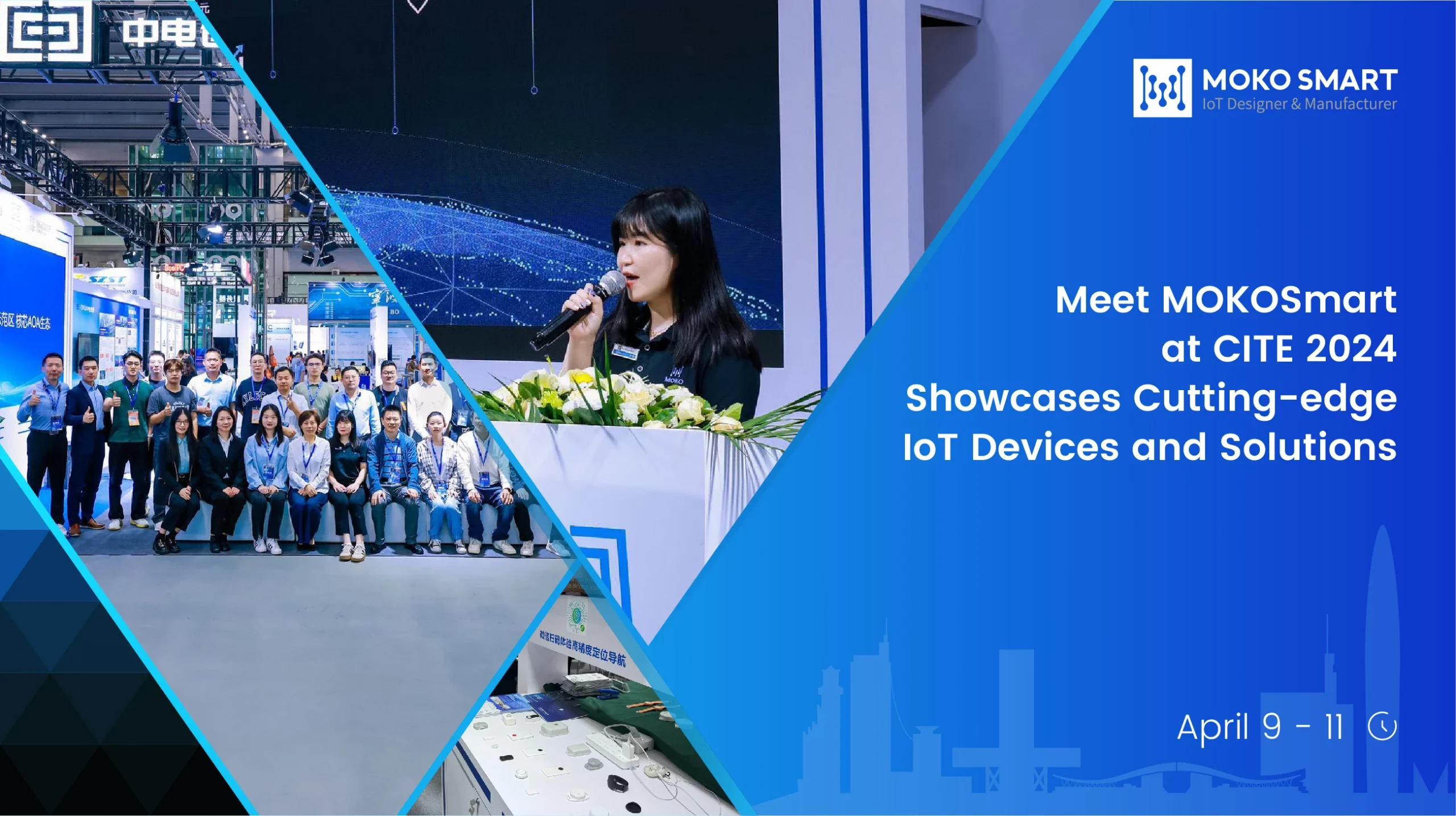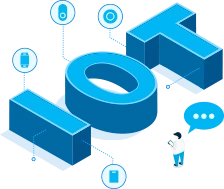The Internet of Things (IoT) is driving demand for wireless connectivity across industries. Companies in industries from supply chain to infrastructure want to wirelessly monitor remote assets, track shipments, digitize equipment, and more. But many wireless technologies like WiFi and Bluetooth alone can’t cut it for these long-range use cases. Enter LoRa – an emerging wireless standard that’s like Bluetooth on steroids. It seems well-suited for large-scale IoT network deployments with its long-range and low-power capabilities. In this blog, I’ll give an overview of what is LoRa, how it works, its key benefits, applications, and tips for trying it yourself.
The definition of LoRa technology
LoRa stands for Long Range Radio and is mainly targeted for the Internet of Things (IoT) and M2M networks. It is a sort of new wireless modulation approach designed precisely for long-range connectivity and low-power communications. This technology will allow multi-tenant or public networks to connect a number of applications running on the same network.
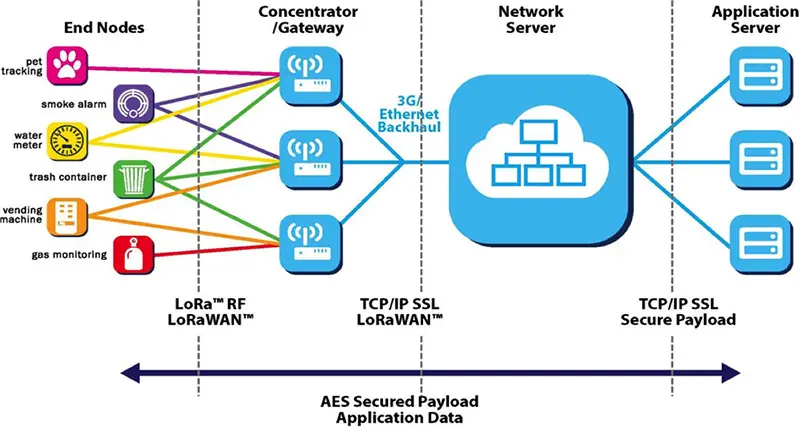
The LoRa protocol includes a number of different layers including application and device-level for secure communications, encryption at the network. Each individual LoRa gateway has the capability to handle up to millions of nodes. The signals can extend a significant distance, which means that there is less structure required, making constructing a network faster and much cheaper to implement.
It was initially developed by Cycleo of Grenoble, France which was acquired by Semtech in 2012. Later, a non-profit alliance standardized LoRaWAN – a communication protocol built on top of LoRa modulation. LoRaWAN defines the system architecture while LoRa provides long-range physical connectivity.
LoRa network architecture
LoRaWAN architecture consists of end-nodes, gateways, the network server and the application server. In terms of the authentic architecture for the LoRa network, the nodes are typically in a star-of-stars topology with gateways forming a see-through bridge. These relay messages between the central network server and end-devices in the backend. Communication to end point nodes is usually bi-directional, but it is also possible to support multicast operation, and this is useful for features such as the like or other mass distribution messages or software upgrades.
- LoRa sensor: The endpoints are the elements of the LoRa network where the control or sensing is undertaken. They are normally remotely located.
- LoRa gateway: The gateway receives the infrastructures from the LoRa endpoints and then transfers them onto the backhaul system. This part of the LoRa network can be cellular, Ethernet, or any other telecommunications link wireless or wired. The gateways are connected to the network server using typical IP connections. In this way, the data uses a typical protocol but can be connected to any telecommunications network, whether private or public. In view of the likeness of a LoRa network to that of a cellular one, LoRaWAN gateways may often be co-located with a cellular base station. In this way, they are able to use extra capacity on the backhaul network.
- LoRa network server: The LoRa network server succeeds in the network and as part of its function, it acts to remove duplicate packets, adapts data rates, and schedules acknowledgment. The assessment of the way in which it can be deployed and connected makes it very easy to deploy a LoRa network.
- Application server: Then, a remote computer can control the actions of the endpoints or collect data from the endpoints – the LoRa network being almost translucent.
How does LoRa technology work
LoRa wireless uses spread spectrum modulation, which spreads a narrowband signal over a wider channel bandwidth. Its long-range wireless magic comes from some clever optimizations:
Chirp Spread Spectrum (CSS)
This is the physical layer modulation technique used by LoRa radio. CSS works by taking a sinusoidal signal and changing its frequency linearly over time, creating a chirp signal. This signal is then modulated onto a carrier frequency.
By chirping the signal over a wider bandwidth, LoRa spreads the energy over a larger frequency range. This increases resistance to interference and noise, while improving the signal reception at the gateway.
Adaptive Data Rate (ADR)
This is LoRa’s method for optimizing data rates dynamically between the end-node devices and gateways. Using ADR, nodes can shift to faster data rates when interference is low and shift to more robust data rates when interference increases.
This optimization ensures the best data rates under changing channel conditions, maximizing both battery life of nodes and overall network capacity.
Together CSS and ADR give LoRa its impressive range and resilience while using minimal power. The signals appear noise-like to other systems, enhancing security.
Key features and benefits of LoRa technology
Let’s take a deeper look at some of the standout benefits of LoRa radio technology:
- Long-range connectivity– Enabling ranges of 15+ km in rural settings and 5+ km in urban areas. Permits city-scale coverage, and good penetration of buildings is achieved.
- Low power– Between 10 mA and 100 nA in sleep mode. Depending on the application, the battery life is 2 to 15 years. Dramatically reduces maintenance costs.
- Secure transmissions– AES-128 bit encryption secures data and prevents tampering.
- Accurate geolocation– Signals can pinpoint location to within tens of meters without GPS. Helpful for asset tracking.
- Global spectrum bands – 868 MHz (863–870 MHz, divided into several subbands) in Europe and 915 MHz in the USA. The channel usage period is limited by regulations in many countries (duty cycle).
- Bidirectional communication– Send data up and push configuration down. LoRa communication devices nable remote control.
- High capacity– A single LoRa gateway can handle millions of messages daily from thousands of devices.
- Open standard– LoRaWAN is an open spec overseen by the non-profit LoRa Alliance. Drives adoption and interoperability.
LoRa technology basics
There are several key elements of LoRa technology. Some of its key features include the following:
- Up to Millions of nodes
- Long battery life; in spare of ten years
- Long range; 15-20 km.
There are various elements of LoRa technology that provide overall connectivity and functionality.
LoRa protocol stack: LoRa Alliance has also defined an open protocol stack. The creation of this open-source stack has allowed the concept of LoRa to raise because all the different types of companies involved in LoRa development, deployment, and use have been able to come together to create a low-cost and easy-to-use solution for connectivity to all manners of connected IoT devices.
LoRa network design: Besides the RF elements of the LoRa wireless system, there are some other elements of the network architecture, including the presence of overall system architecture, Server, backhaul, and application computers. The overall architecture is often mentioned as LoRaWAN.
LoRa PHY / RF interface: The LoRa physical layer or PHY is key to the operation of the system. It governs the aspects of the RF signal that is transmitted between the nodes or endpoints, i.e. LoRa gateway and the sensors are where signals are received. The physical layer or radio interface governs aspects of the signal including the modulation format, power levels, frequencies, signaling between the transmitting and receiving elements, and other related topics.
LoRa modulation
LoRa Technology is the wireless modulation or physical (PHY) silicon layer, used to create the long-range communication link.
LoRa physical layer uses a form of spread spectrum modulation. The LoRa modulation system uses wide-band linear frequency-controlled pulses. The level of frequency increase or decrease over time is used to encode the data to be transmitted, such as; a form of chirp modulation.
This type of modulation enables LoRa wireless systems to demodulate signals that are 20dB below the noise floor when the demodulation is combined with forwarding error correction, FEC. When compared to a traditional FSK system; the link budget for a LoRa system can deliver an improvement of more than 25dB.
As a result of the point that the transmission is spread in a pseudo-random fashion, it may be difficult for non-LoRa users to detect and appears like noise. This can support the security of the system.
A further advantage of the system is that the chirp modulation and the system, in general, are tolerant of frequency offsets and as a result, it is possible to use a basic crystal oscillator with a 20-30 ppm acceptance rather than a temperature-paying oscillator, TCXO. This can provide some good cost savings within the node electronic circuitry.
LoRa network security
The issue of network security is becoming gradually important. As such LoRa networks require high levels of security to prevent the trouble of any systems.
To attain the required levels of security for LoRa networks, several layers of encryption have been used:
Device specific key (EUI128).
The Unique Network key (EUI64) guarantees security on the network level.
Unique Application key (EUI64) certify end to end security.
Using these layers of encryption ensures that the LoRa network remains suitably secure.
Applications of LoRa technology
LoRa wireless technology is preferably placed to be used in a variety of applications. The long-range and low-power capabilities mean that endpoints can be deployed in a wide variety of places, outside and inside buildings and still have the ability to be able to communicate with the gateway. As the system is easy to deploy and it can be used for a large number of IoT, Internet Things, and machine-to-machine, applications, M2M. Here are some common LoRa applications:

Smart cities – Smart metering, environmental monitoring, smart parking, street lighting, waste management and more.
Supply chain/logistics – Asset tracking and monitoring, cold chain monitoring, fleet management.
Agriculture – Soil monitoring, irrigation control, livestock tracking.
Industrial IoT – Equipment monitoring, predictive maintenance, automation.
Infrastructure monitoring – Monitor railway tracks, bridges, tunnels for any physical changes.
Utilities – Smart grid, gas/water metering, leak detection, distributed power generation.
Building automation – HVAC and lighting control, energy management, room occupancy monitoring.
Healthcare – Asset tracking, medical device sensors, patient monitoring.
Retail – Inventory management in warehouses, geo-marketing via beacons.
LoRa vs LoRaWAN – What’s the difference?
LoRa describes the lower physical layer, the upper networking layers were absent. LoRaWAN is one of the numerous protocols that were developed to describe the upper layers of the network. LoRaWAN is a cloud-based media access control (MAC) layer protocol but acts mainly as a network layer protocol to manage communication between end-node devices and LPWAN gateways, as a steering protocol, maintained by the LoRa Alliance. LoRaWAN specification version 1.0 was released in June 2015.
LoRaWAN defines the system architecture and communication protocol for the network, while the LoRa physical layer allows the long-range communication link.
So in summary:
LoRa = physical layer modulation
LoRaWAN = communication protocol and architecture
Together they provide the complete solution including both the long-range connectivity and flexible network communication architecture.
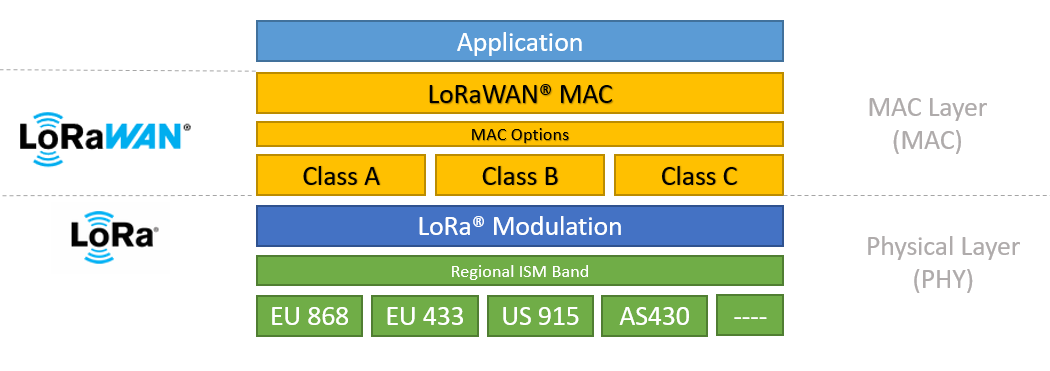
What is the LoRa Alliance?
As with many other systems, an industry body was set up to develop then promote the LoRa wireless system across the industry called the LoRa Alliance. It was launched in March 2015. As the Alliance states, it was set up to provide an open global standard for secure, carrier-grade IoT LPWAN connectivity.
Although LoRa had been essentially developed by Semtech, opening the standard out enabled it to be adopted by a wide number of companies, thereby growing the ecosystem and gaining significantly greater engagement, a wider variety of products and an overall increase in usage and acceptance.
The founding members of the LoRa Alliance include Actility, Cisco, Eolane, IBM, Kerlink, IMST, MultiTech, Sagemcom, Semtech, and Microchip Technology, as well as lead telecom operators: Bouygues Telecom, KPN, SingTel, Proximus, Swisscom, and FastNet (part of Telkom South Africa).
Getting started with LoRa technology
Basically, everyone can operate their own LoRa communications. Since LoRa works in the non-assigned frequency range, no license costs for frequencies are necessary. If you only have to set up a LoRaWAN in a limited area, the operation of your own gateways and servers can make sense. Looking to build your own LoRa and LoRaWAN solutions? Here are some How MOKOSmart can help you get started with LoRa technology:
– MOKOSmart offers a variety of LoRaWAN sensors for asset tracking, environmental monitoring, parking detection and more.
– Our LoRaWAN gateways have IP66 enclosures and built-in LoRa and Bluetooth performance.
– We provide Bluetooth LoRaWAN gateways for connecting Bluetooth devices.
– Be sure to pilot with small test deployments to evaluate real-world coverage and performance.
– Take time to design the full end-to-end system architecture.
– Join the LoRa Alliance to collaborate and access resources.
– With our sensors, gateways, and LoRa modules, you can rapidly build long-range IoT networks.
With easy-to-integrate LoRa IoT devices from MOKOSmart, you can rapidly build long-range wireless connectivity into your IoT applications. Reach out for help getting started with LoRa technology.
READ MORE ABOUT LORA


